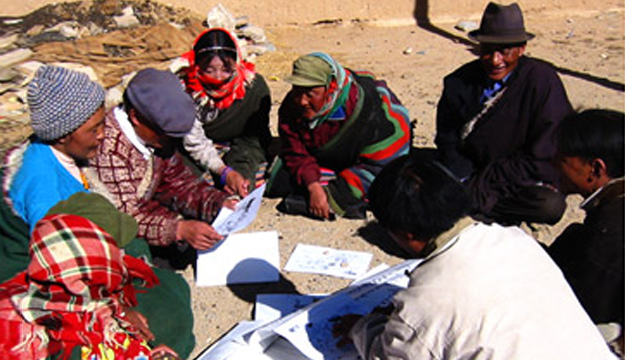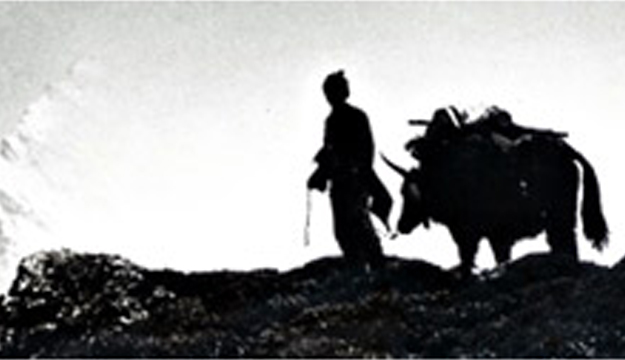Qomolangma National Nature Preserve

Covering 36,000 square kilometers of the Tibetan Himalayas, the Qomolangma National Nature Preserve (QNNP) is home to the world’s tallest mountains and immense biodiversity. The region was given its protected status in 1989 with the help of Future Generations and is the first in a new kind of protected area. Reflecting the principles of Future Generations SEED-SCALE methodology, the preserve integrates existing government structures and local communities into a conservation management structure that addresses economic, social and environmental concerns. Allowing for human habitation within park borders and designating mixed land use zones brings local communities back into the conservation process and simultaneously addresses development needs.
The preserve is also the first of its kind that has not hired outside wardens. Instead, Future Generations-trained Pendebas, village leaders trained in community healthcare, conservation, and income generation, serve as conservation stewards in the preserve.
In 1994, after five years of witnessing positive changes, the government elevated the preserve to National Nature Preserve status, the same level of legal protection afforded to the Great Wall. Since then, Future Generations has continued its work in the preserve. In 1999, it helped revise the QNNP conservation master plan and has continued the Pendeba Program. To date, over one thousand village leaders have become Pendebas and are bringing lasting and positive changes to their communities. Future Generations also constructed a visitor center in Shigatse at the gateway to the preserve, which also serves as the main Pendeba training center for the QNNP. Additionally, three monasteries have been restored with Future Generations support, including Rongbuk Monastery, the highest monastery in the world.

Within the boundaries of the Qomolangma National Nature Preserve lies a stunning landscape. The world’s tallest mountains, including Mt. Everest, Lhotse, and Makalu, and deep valleys and gorges extend northwards to the Tibetan high plateau. The average elevation is 4,500 meters. Within the preserve, there is extraordinarily high ecozone diversity, including alpine, temperate, and arctic climate zones. Amongst the mountains and valleys live many rare and endangered species of plants and animals, including the snow leopard, the clouded leopard, the ghoral mountain goat, and many others.
Depending on the same land as the wildlife are the 89,000 Tibetan farmers and nomads that live within the borders of the preserve. Two of the four counties in the preserve are the poorest in China, where 50% of people live below the official poverty line. Pressures for resources, encroaching development and the need to find new sources of income had put the communities at odds with their surrounding environment.
When Future Generations began working in Tibet in the 1980’s, outsiders had been coming to the area for decades, leaving behind their rubbish and creating demands for a more commercialized tourism sector. Such intense interest in the area had created many challenges but also presented many opportunities. Future Generations began helping the local government construct a conservation management structure that would protect the ecology, but also enhance living conditions for Tibetans and ensure that growing numbers of tourists wouldn’t harm the delicate landscape.
Unlike established protected areas across the world, QNNP is a new model of nature preserve that depends on local people to protect the environment and gives them the tools to ensure their own sustainable development.
